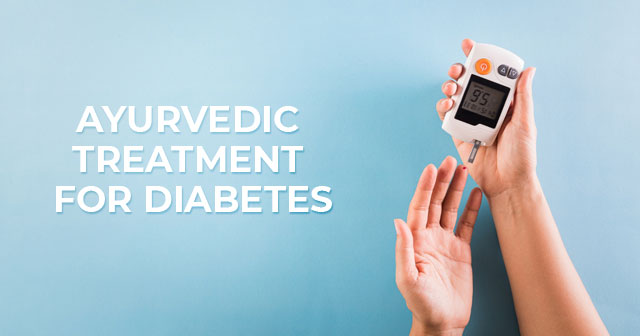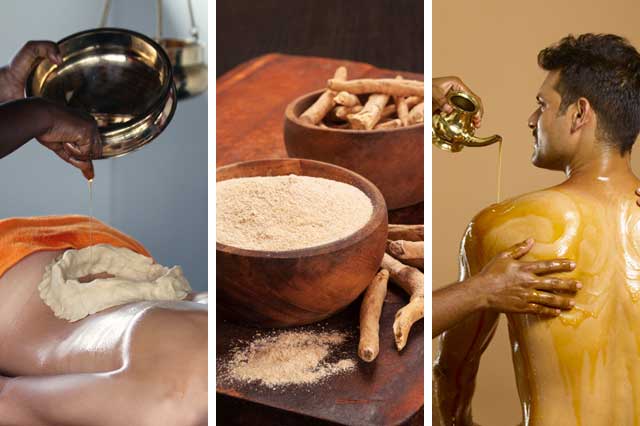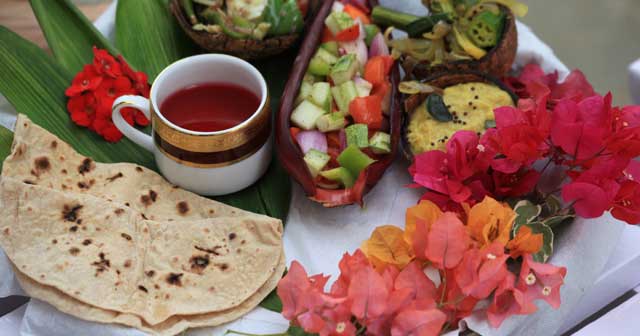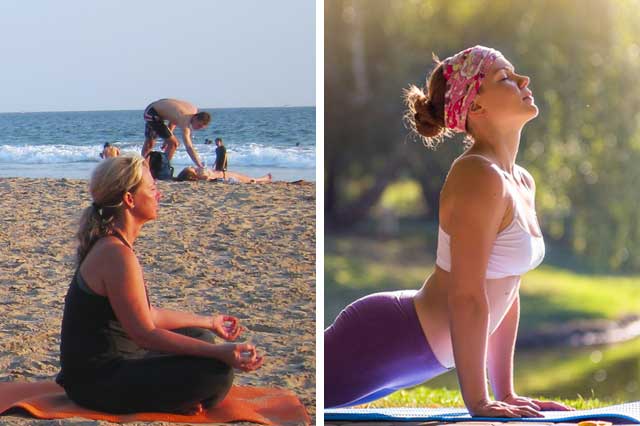
Ayurveda has a holistic approach towards diabetes. Diabetes is a lifestyle disease. Although it can’t be cured completely, we can lessen the disease condition and maintain a balance of health with the help of Ayurveda. The Ayurveda treatment for diabetes includes a purification process, a proper diet based on the body constitution of the patient, ayurvedic herbal combinations and yoga and meditation to reduce the stress level.
According to Ayurveda doshas are energies that pervade the body and mind, each with different functions .All of the doshas can be found in everybody, but different people have more of some doshas than the others. Vata, pitta and kapha are the three doshas. As per Ayurveda diabetes is a kapha disorder. Kapha is a dosha of earth and water. kapha gives the body substance, strength, cohesion, lubrication, cooling and immunity. The main seat of kapha is in the chest and stomach.so people with kapaha dosha should avoid kapha impacting food and sweet foods. When these kinds of foods are taken by people with poor pancreatic function kapha accumulates in the stomach which may lead to turbidity and frequent urination. In diabetes mellitus vata accumulates in the pancreas and hampers its proper functioning and leads to diabetes. People with a dominant kapha dosha are more prone to diabetes. A dominant kapha dosha compounded with a weak agni reduces the metabolic rate . So people with kapha dosha should include more air and fibre elements in their food. Check some ayurveda packages for diabetes treatment.

The detoxification process is determined after the consultation of an Ayurveda doctor. Because the body constitution of each person will be different. In some people obesity may be the primary cause for diabetes. People who are not overly weakened can be subjected to panchakarma treatment. Panchakarma treatment requires proper preparation with oil massage and inner oiling, mostly using herbal or pure ghee. 0il massages and inner oiling are included in the main part of kerala panchakarma treatment. Vata can be irritated by treatments from both forms of panchakarma , so great care is taken to soothe it. Travel ,change of time zone and climate are all vata irritating factors. So if you are traveling for your treatment allow ample time to acclimatize beforehand. After panchakarma treatment give yourself enough time before resume your daily life. Never do any intense work for the following two to three weeks. Panchakarma is a set of five cleansing, detoxifying treatments that remove elevated doshas and rejuvenate the whole body. Panchakarma restores energy, cleanses the tissues and reinstates the natural balance of doshas . While body treatments can soothe the irritated doshas, panchakarma treatments actively remove elevated doshas. The effects of panchakarma can be felt for a year or longer if the proper diet and lifestyle advice is followed. Nowadays , it is generally recommended to have panchakarma treatments once a year in spring or autumn.

Nutrition is considered as a great medicine in Ayurveda. A wholesome well balanced diet is the foundation of health, strength and happiness , for both body and mind. The diet for diabetes treatment is prepared as per the individual body constitution. It should reduce the blood glucose level. Generally contains bitter and light vegetables, ghee , herbs and appropriate food based on individual constitution. Eat spinach, lettuce ,cabbage, tomatoes, coconut, leafy vegetables and sour fruits. Avoid eating rice, sugar, sweet fruits , rhizomes and all starchy food.
Amla, triphala, cinnamon, turmeric, saptrangi, vizaysar, bilva, urmar, karela, tulsi, fenugreek, neem and guggulu are some of the ayurvedic herbs used in the treatment of diabetes. The curcumin in turmeric gives it the anti-inflammatory property. It can control the blood sugar level steadily. Amla or Indian gooseberry can keep the blood sugar level normal. So it is used as a natural remedy to treat diabetes. It has anti-inflammatory properties and reduces obesity. It can boost the immune system and detoxify the body. Triphala can control the body's glucose level in many ways. It can inhibit starch digestion and absorption. It can also activate pancreas and stimulate insulin production .Fenugreek which is a common dietary inclusion in majority of kerala cuisines. Fenugreek also can reduce the fasting glucose level and can improve the glucose tolerance. Tulsi also has many anti-inflammatory properties. Tulsi can activate the proper functioning of pancreatic beta cells and improve insulin secretion.

A balanced approach to yoga will help stabilize all three doshas. The asana , pranayama and relaxation exercises are all common with people of all body constitution. People with diabetes can practice deep breathing, sun salutation, shoulder stand and forward bend. Ayurveda teaches us that we are not our minds, but rather a separate consciousness, also called the self. The purpose of yoga is to prepare our body in a balanced state suitable for meditation. Through meditation we can realize the true self. Both yoga and Ayurveda teach that the root cause of disease is the failure to understand our true nature.
The approach of Ayurveda in treating diabetes is a holistic approach like any other disease. A lifestyle modification with proper diet and exercise can control diabetes. Ayurveda treatment uses freshly extracted herbal formulation . All the treatments should be done under
the supervision of an Ayurveda doctor. The Ayurveda treatment varies for people with different body constitution.
TC 53/1146(2), Avaduthura, Kovalam, Vizhinjam P.O., Kerala, Pin:695521, India

kovalam
Copyright © . The Ayur Villa Resort. All rights reserved.